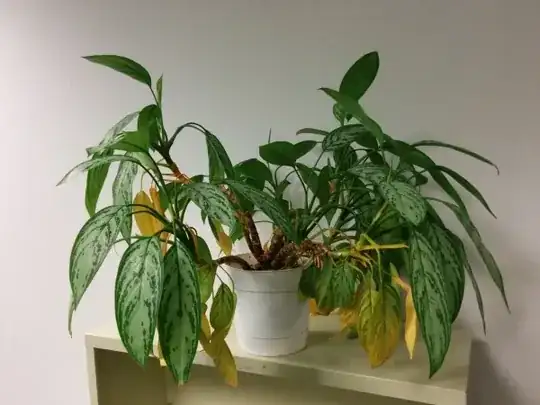I have an Aglaonema (also commonly known as a Chinese Evergreen) at my desk at work. Over the past month or so, its leaves have been yellowing and dying rapidly. This is how it looked today, a Monday; last Thursday, I removed the dead and dying leaves, so the yellowing you see in the photograph happened over four days.

My desk has a southwest facing window high up on the wall; the plant is on a level with the window and is a few feet from it. There are tall trees near the building, but they're not in leaf yet, so it gets some indirect sunlight every day. I've been sitting at this desk for 1½ years, and my plant wasn't like this last year.
What is causing this, and how can I help my plant recover?